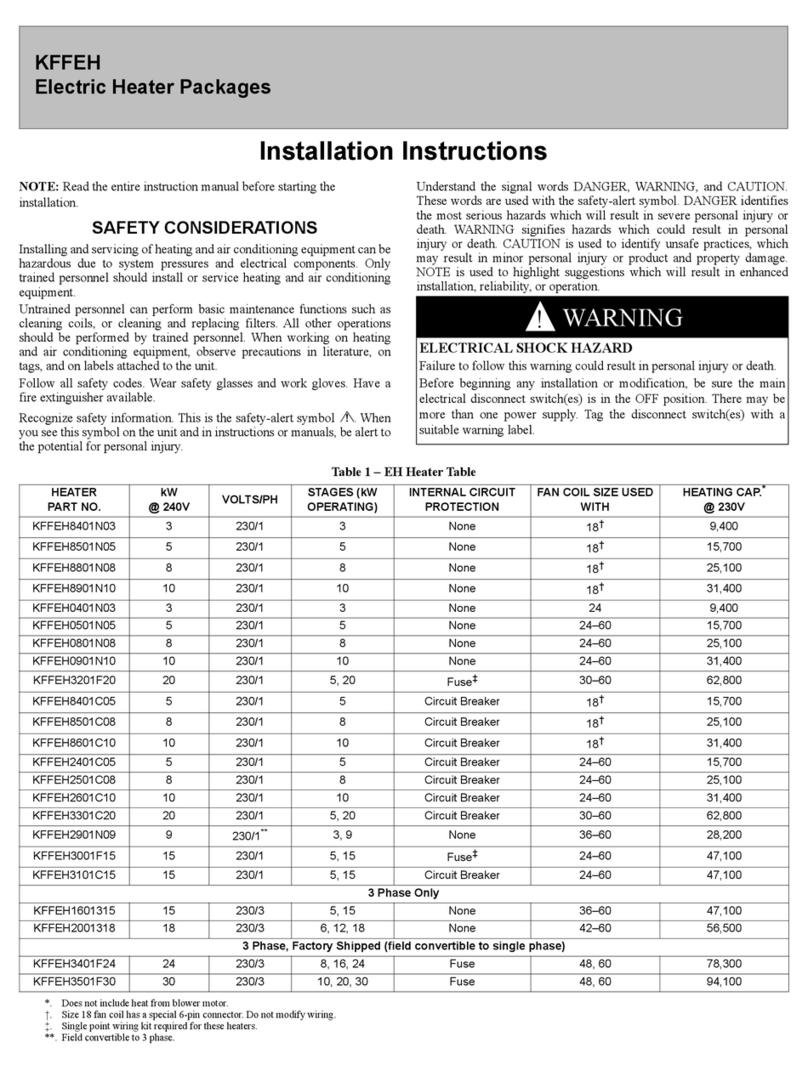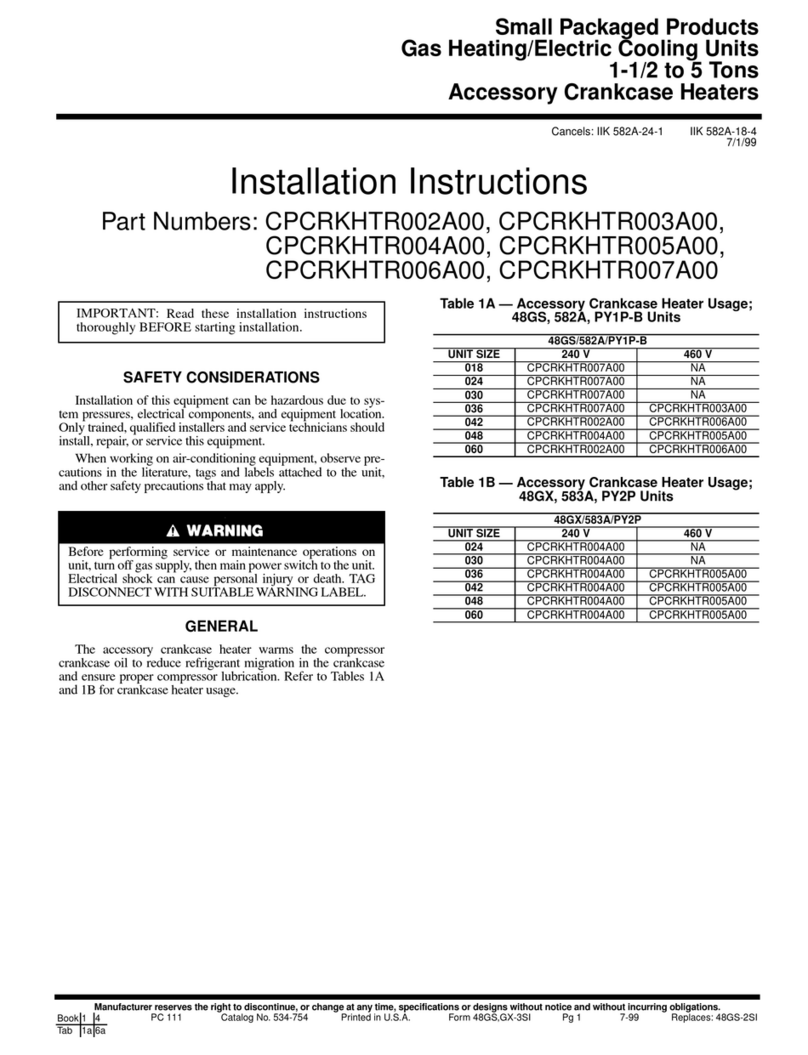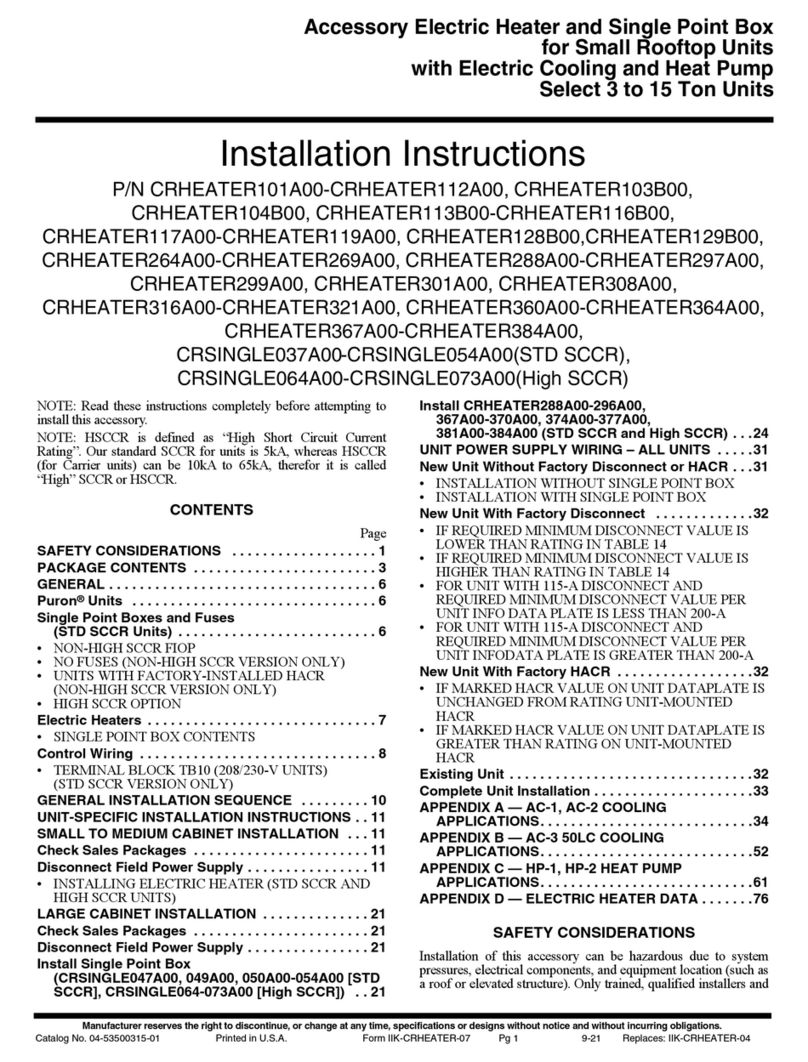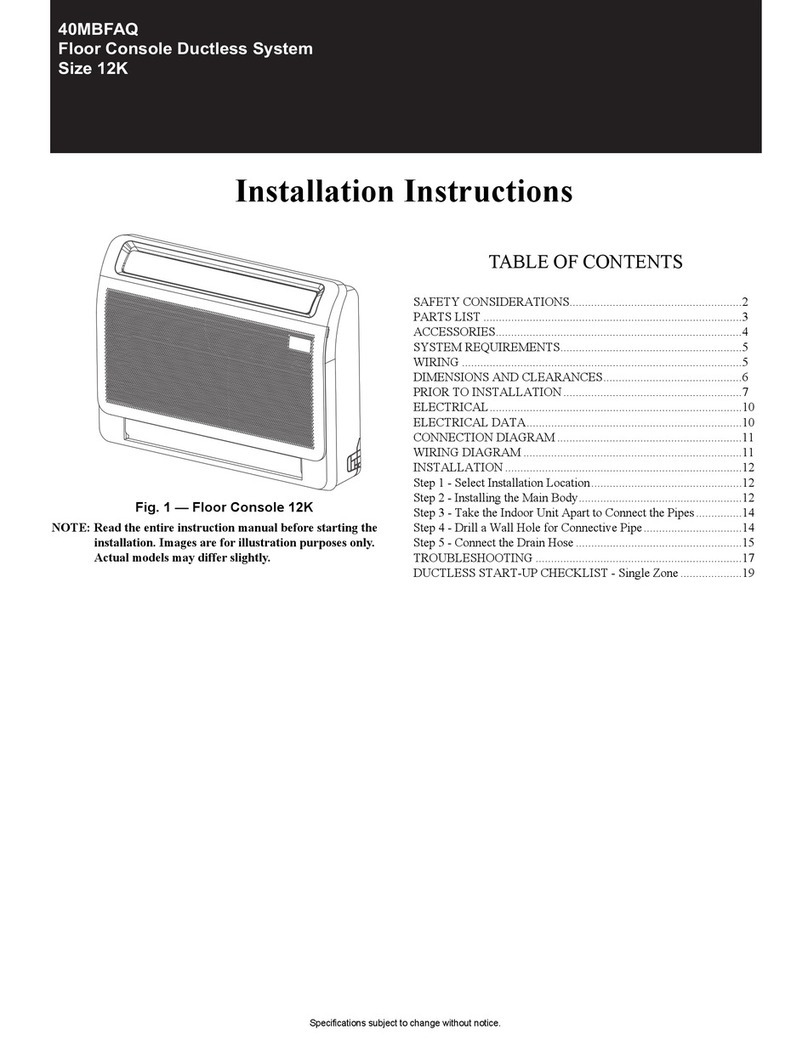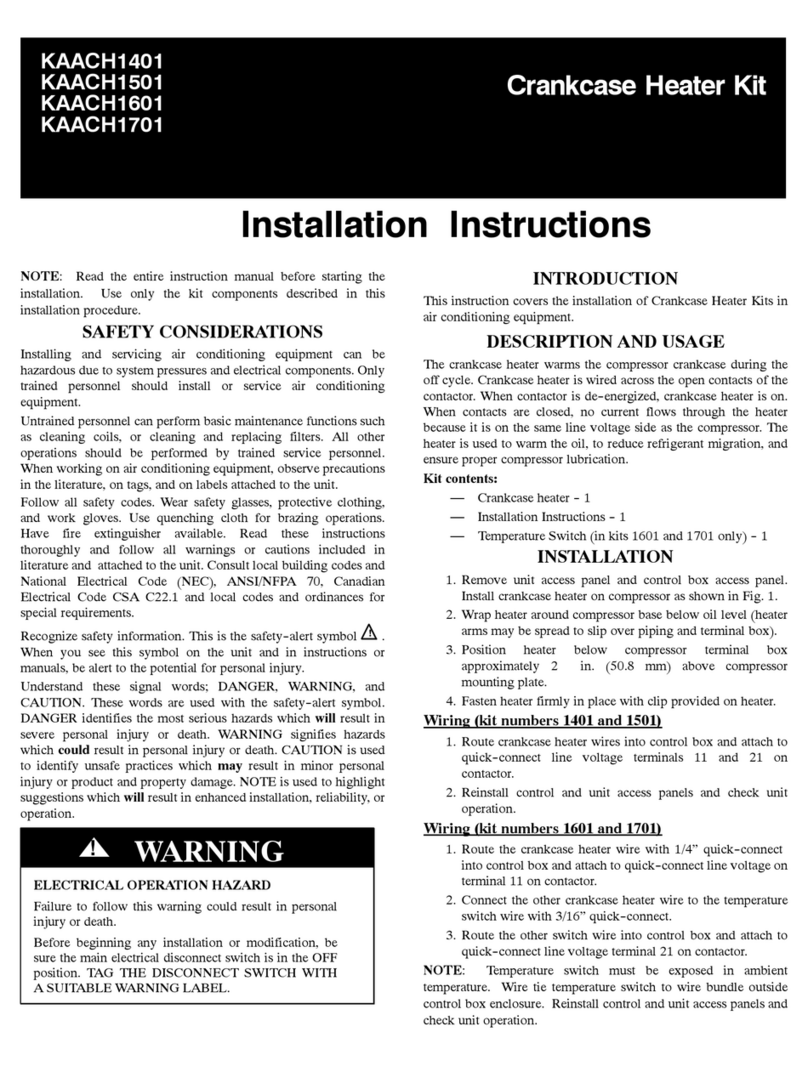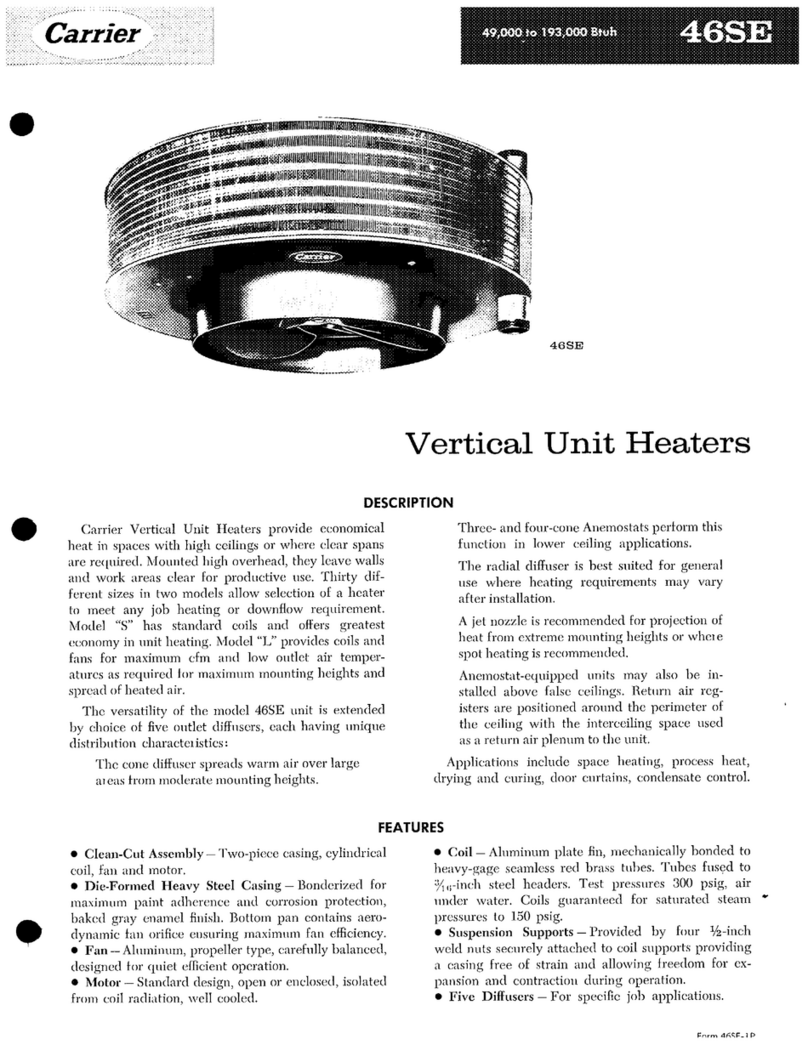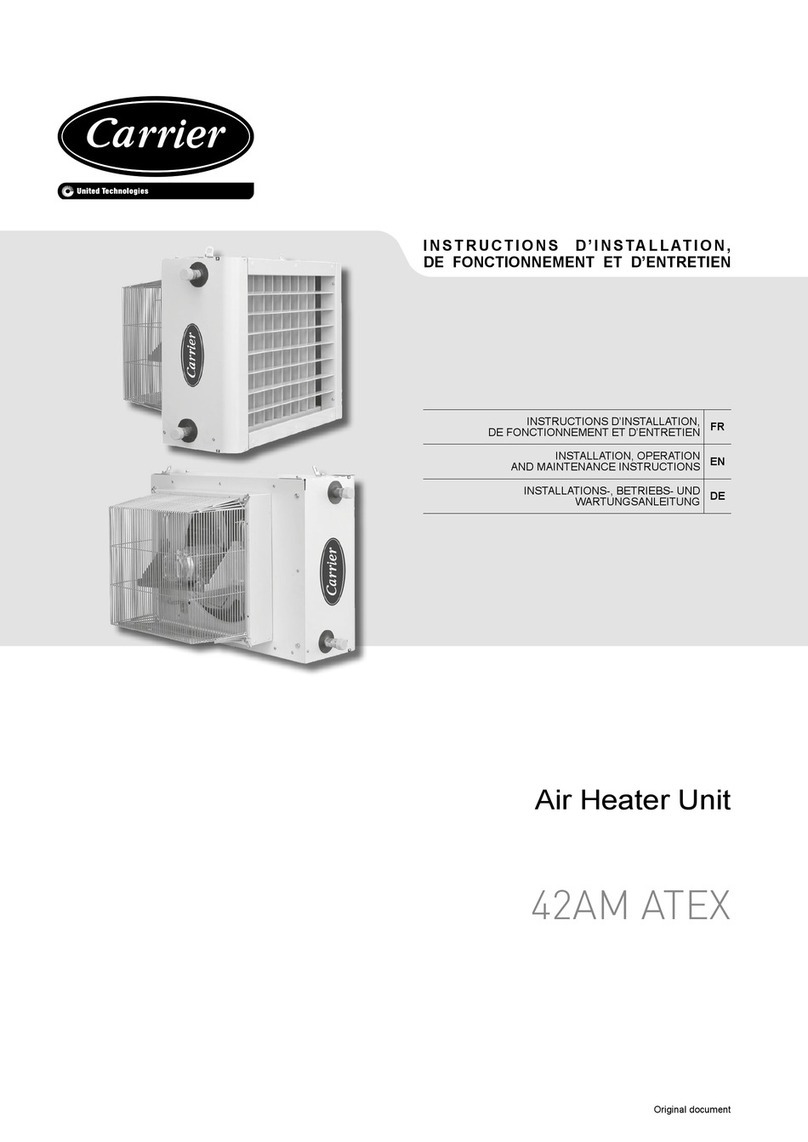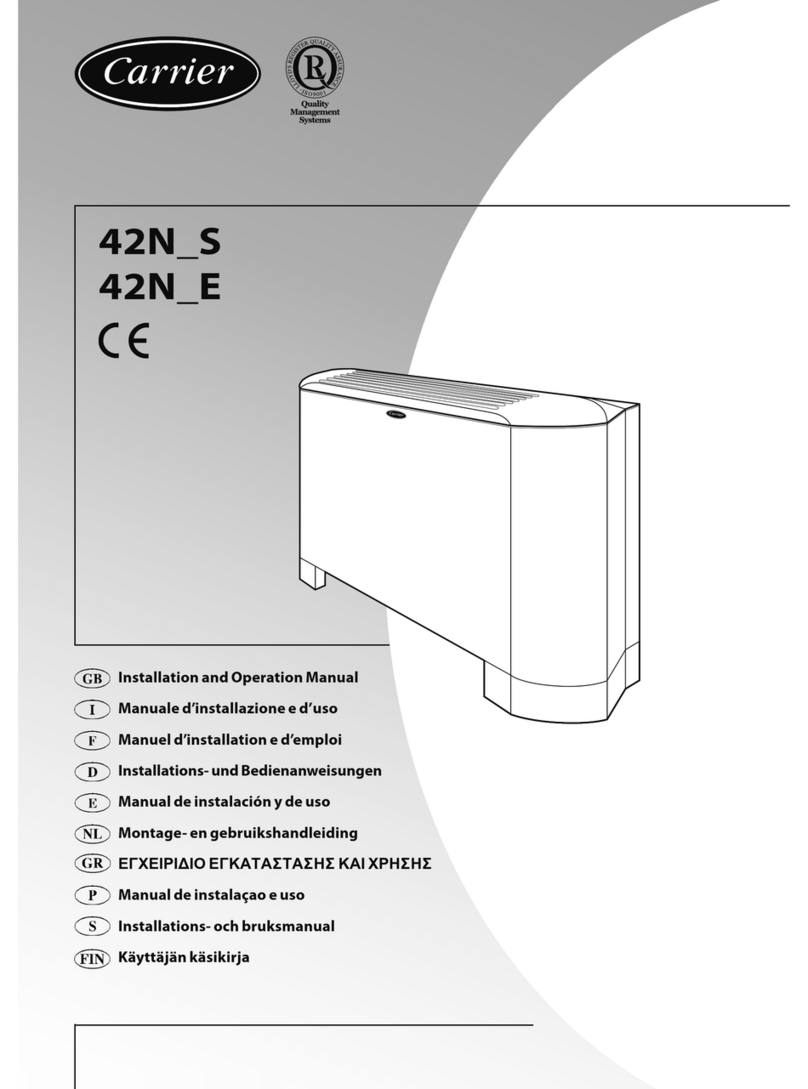
Installation Instructions
NOTE: Read the entire instruction manual before starting the
installation.
SAFETY CONSIDERATIONS
Installing and servicing of heating and air conditioning equipment can be
hazardous due to system pressures and electrical components. Only
trained personnel should install or service heating and air conditioning
equipment.
Untrained personnel can perform basic maintenance functions such as
cleaning coils, or cleaning and replacing filters. All other operations
should be performed by trained personnel. When working on heating
and air conditioning equipment, observe precautions in literature, on
tags, and on labels attached to the unit.
Follow all safety codes. Wear safety glasses and work gloves. Have a
fire extinguisher available.
Recognize safety information. This is the safety-alert symbol . When
you see this symbol on the unit and in instructions or manuals, be alert to
the potential for personal injury.
Understand the signal words DANGER, WARNING, and CAUTION.
These words are used with the safety-alert symbol. DANGER identifies
the most serious hazards which will result in severe personal injury or
death. WARNING signifies hazards which could result in personal
injury or death. CAUTION is used to identify unsafe practices, which
may result in minor personal injury or product and property damage.
NOTE is used to highlight suggestions which will result in enhanced
installation, reliability, or operation.
NOTE: Use an accessory downflow base to maintain proper clearance
on downflow installations.
EHC
Electric Heater Packages
WARNING
!
ELECTRICAL SHOCK HAZARD
Failure to follow this warning could result in personal injury or death.
Before beginning any installation or modification, be sure the main
electrical disconnect switch(es) is in the OFF position. There may be
more than one power supply. Tag the disconnect switch(es) with a
suitable warning label.
Table 1 – EH Heater Table
HEATER
PART NO.
kW
@ 240V VOLTS/PH STAGES (kW
OPERATING)
INTERNAL CIRCUIT
PROTECTION
FAN COIL SIZE USED
WITH
HEATING CAP.*
@ 230V
*. Does not include heat from blower motor.
EHC05CKN 5 230/1 5 None 18†
†. Size 18 fan coil has a special 6-pin connector. Do not modify wiring.
15,700
EHC07CKN 8 230/1 8 None 18†25,100
EHC10CKN 10 230/1 10 None 18†31,400
EHC05BKN 5 230/1 5 None 24–60 15,700
EHC07BKN 8 230/1 8 None 24–60 25,100
EHC10BKN 10 230/1 10 None 24–60 31,400
EHC20BKF 20 230/1 5, 20 Fuse‡
‡. Single point wiring kit required for these heaters.
30–60 62,800
EHC05CKB 5 230/1 5 Circuit Breaker 18†15,700
EHC07CKB 8 230/1 8 Circuit Breaker 18†25,100
EHC10CKB 10 230/1 10 Circuit Breaker 18†31,400
EHC05BKB 5 230/1 5 Circuit Breaker 24–60 15,700
EHC07BKB 8 230/1 8 Circuit Breaker 24–60 25,100
EHC10BKB 10 230/1 10 Circuit Breaker 24–60 31,400
EHC20BKB 20 230/1 5, 20 Circuit Breaker 30–60 62,800
EHC09BKCN 9 230/1**
**. Field convertible to 3 phase.
3, 9 None 36–60 28,200
EHC15BKF 15 230/1 5, 15 Fuse‡24–60 47,100
EHC15BKB 15 230/1 5, 15 Circuit Breaker 24–60 47,100
3 Phase Only
EHC15BHN 15 230/3 5, 15 None 36–60 47,100
EHC18BHN 18 230/3 6, 12, 18 None 42–60 56,500
3 Phase, Factory Shipped (field convertible to single phase)
EHC25BHCF 24 230/3 8, 16, 24 Fuse 48, 60 78,300
EHC30BHCF 30 230/3 10, 20, 30 Fuse 48, 60 94,100
